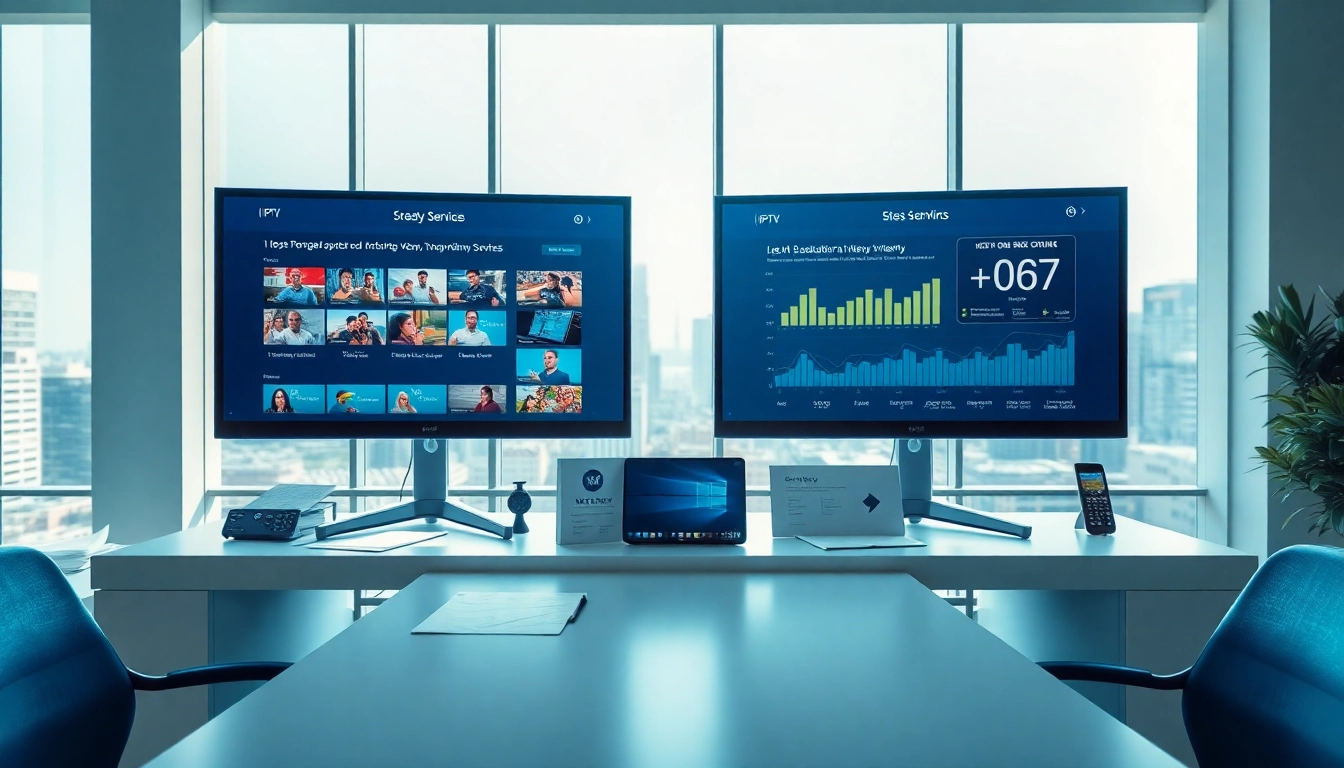Understanding Customer Loyalty Software
What is Customer Loyalty Software?
Customer loyalty software is an essential tool for modern businesses, designed to create, manage, and analyze loyalty programs. This software enables businesses to track customer interactions, purchases, and engagement levels while fostering a meaningful connection through reward systems. By utilizing Customer Loyalty Software, companies can incentivize customers to return, turning sporadic buyers into loyal, repeat customers. These platforms store data about customer behavior, preferences, and purchasing history, which can be leveraged to tailor marketing efforts and enhance the overall customer experience.
Importance of Loyalty Programs in Modern Business
Loyalty programs have evolved into indispensable strategies for building long-term customer relationships and enhancing brand loyalty. In an era where consumers are bombarded with options, businesses need to cultivate a loyal customer base to thrive. Loyalty programs provide customers with reasons to choose a particular brand over competitors, translating directly into increased sales and customer retention. According to research, retaining existing customers is significantly more cost-effective than acquiring new ones, making loyalty programs a beneficial investment for businesses across various industries.
Key Features to Look for in Loyalty Software
When selecting a customer loyalty software, businesses should consider several pivotal features:
- User-Friendly Interface: Intuitive dashboards facilitate user engagement and streamline operations.
- Customizable Reward Structures: The ability to create tiered rewards or point systems that align with business objectives.
- Data Analytics: Robust reporting features that provide insights into customer behavior, enabling data-driven decisions.
- Integration Capabilities: Seamless integration with existing systems such as CRM, POS, and eCommerce platforms.
- Multi-channel Engagement: Tools for engaging customers through various channels like email, mobile apps, and social media.
Benefits of Implementing Customer Loyalty Software
Boosting Customer Retention Rates
One of the primary benefits of implementing customer loyalty software is the enhancement of customer retention rates. According to studies, a mere 5% increase in customer retention can lead to an increase in profits between 25% to 95%. Loyalty software facilitates this by allowing businesses to reward repeat purchases, thereby increasing customer satisfaction and encouraging repeat visits. This retention strategy proves vital, as loyal customers tend to spend more over time and serve as brand advocates, promoting the business through positive word-of-mouth.
Enhancing Customer Experience through Personalization
The integration of customer data into loyalty programs allows for personalized marketing efforts. By understanding individual customer preferences and behaviors, businesses can tailor their offerings, creating meaningful interactions that resonate with their audience. The 2023 Consumer Loyalty Report emphasizes that personalized communication not only increases customer satisfaction but also drives engagement, leading to higher conversion rates. Personalization makes customers feel valued, further enhancing their loyalty to the brand.
Measuring the Success of Loyalty Initiatives
Measuring the effectiveness of customer loyalty programs is essential for continuous improvement. Key performance indicators (KPIs), including customer retention rates, average order value, and engagement metrics, provide insights into the program’s success. Loyalty software typically includes analytical tools that help businesses track these metrics efficiently. Regularly assessing these indicators enables businesses to adjust their strategies, ensuring that the loyalty program achieves its intended goals and evolves with changing customer preferences.
Choosing the Right Customer Loyalty Software for Your Business
Top Factors to Consider When Selecting Software
Selecting the right customer loyalty software requires careful consideration of various factors:
- Business Size and Type: Smaller businesses may require more straightforward solutions, while larger enterprises may need software that accommodates complex loyalty strategies.
- Budget and Cost: Consider both upfront costs and ongoing expenses; some platforms operate on a subscription model while others may require a significant one-time payment.
- Customer Insights: The ability of the software to collect customer data and generate actionable insights is critical for refining loyalty initiatives.
- Customer Support: Robust customer support can significantly affect your ability to implement and maintain the software effectively.
Comparison of Leading Customer Loyalty Software Providers
When evaluating customer loyalty software providers, it’s beneficial to compare features, pricing, and user feedback. Popular solutions include:
- Smile.io: A leading platform known for its customizable loyalty forms, particularly for eCommerce businesses.
- LoyaltyLion: Offers extensive integration capabilities and detailed analytics to empower retailers.
- Yotpo: A comprehensive solution that combines loyalty with reviews, enabling businesses to harness user-generated content.
Your Business Needs vs. Software Features
Ultimately, the suitable loyalty software for your business hinges on aligning your unique needs with the features offered by various platforms. Engage stakeholders within your organization to identify critical areas for improvement and ensure the selected software fulfills these requirements. Carefully assess the integration capabilities, the ease of use, and the specific functionalities that cater to insights you wish to derive from customer interactions.
Best Practices for Implementing Customer Loyalty Programs
How to Design Effective Loyalty Campaigns?
Designing effective loyalty campaigns requires a thoughtful approach that emphasizes customer engagement and value. First, clearly define your objectives—whether you seek to boost repeat purchases, introduce new product lines, or increase customer engagement. Employ customer feedback to shape your campaigns, ensuring they resonate with your target audience. Running pilot campaigns can help gauge effectiveness before a full rollout, allowing you to adapt based on early insights.
Engaging Customers across Multiple Channels
Engagement across multiple channels (omnichannel strategy) is vital for a cohesive customer experience. Your loyalty program should be accessible through various touchpoints, including mobile apps, email newsletters, and in-store interactions. Activities like exclusive offers for app users or loyalty points earned through social media interactions encourage a more immersive experience. Each channel should deliver a consistent brand message and reinforce the loyalty initiative, creating a unified experience that encourages more profound customer connections.
Using Data to Refine Your Loyalty Programs
Data is the backbone of successful loyalty programs. Utilize analytics from your loyalty software to assess program performance dynamically. Key metrics like customer lifetime value (CLV), repeat purchase rate, and redemption rates should guide decision-making. Implement A/B testing for changes to your loyalty offers—testing different incentives can yield insight into what resonates with your customers and refine your approach for better results.
Future Trends in Customer Loyalty Software
Gamification and Its Impact on Loyalty Programs
Gamification has emerged as a powerful trend in customer loyalty software, adding elements of gameplay to encourage engagement. Offering points, badges, or leaderboards can motivate customers to interact with your brand on a deeper level. For instance, brands like Starbucks use gamification effectively, with their app encouraging users to earn stars with purchases and engage in various promotional challenges. Such mechanisms not only drive repeat purchases but also foster a sense of community and belonging among customers.
The Role of Artificial Intelligence in Loyalty Solutions
As artificial intelligence (AI) becomes increasingly integrated into customer loyalty strategies, businesses can leverage it to enhance personalization. AI can analyze large datasets to identify patterns and predict customer behaviors, enabling tailored communications and offers. This precision fosters deeper relationships between brands and consumers, ultimately driving loyalty. Additionally, AI chatbots can provide real-time assistance regarding loyalty inquiries, enhancing customer service and operational efficiency.
What’s Next for Customer Engagement Strategies?
Looking ahead, customer engagement strategies will likely evolve to include augmented reality (AR) experiences and deeper social integration. Brands will need to explore innovative methods to connect with consumers, like immersive experiences (virtual shopping, AR in-store experiences) and community engagement initiatives. A strong brand presence on social media platforms will also be crucial as consumers increasingly look to these channels for connections and loyalty offerings. Through constant exploration and adoption of new trends, businesses can sustain loyalty and adapt to the ever-changing landscape of consumer behavior.



